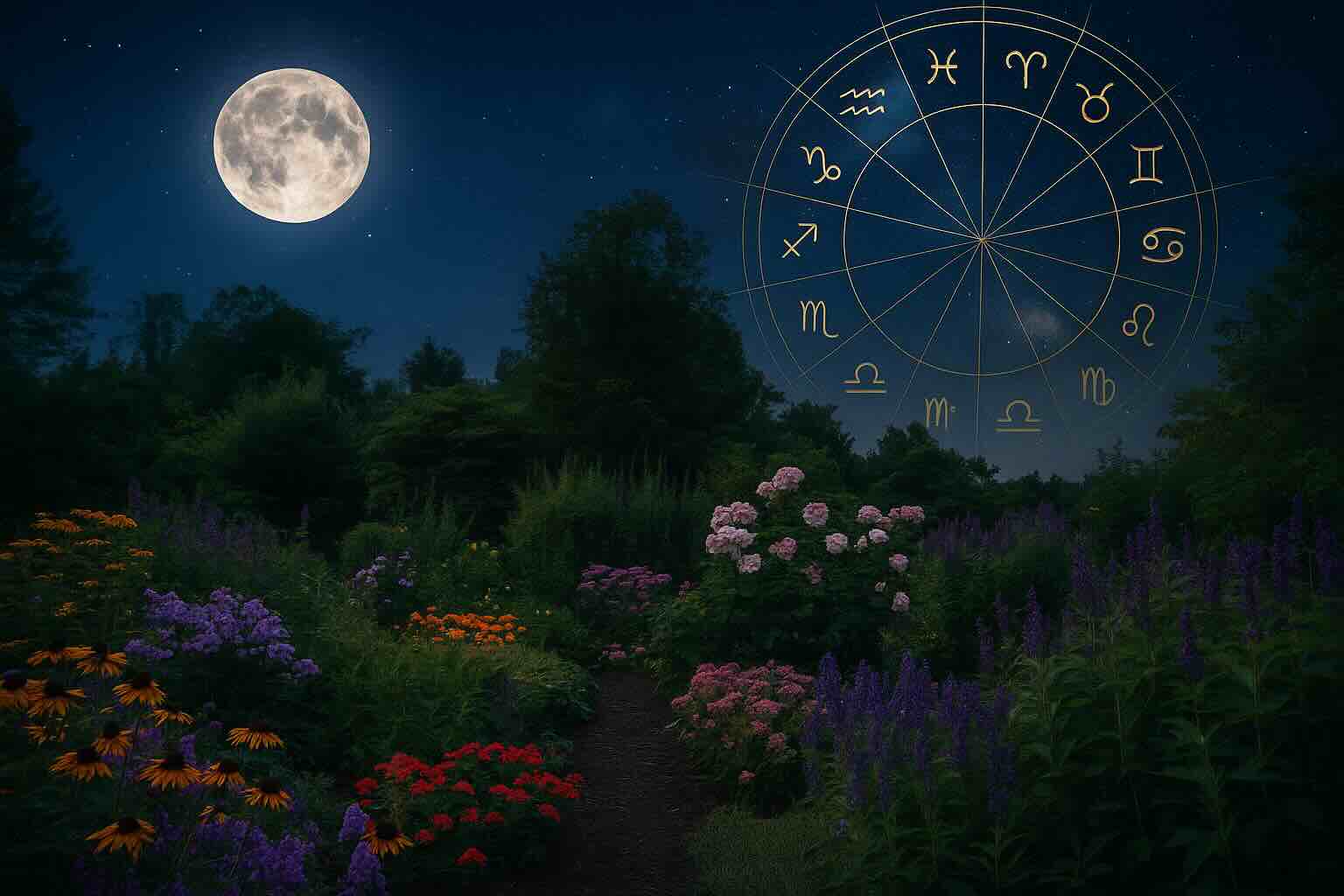For centuries, farmers and gardeners have looked up to the sky for guidance. The moon, with its shifting phases, and the zodiac, with its cosmic cycle, have long been believed to influence plant growth, blooming, and harvests. While modern science explains much through soil, climate, and sunlight, many gardeners still swear that aligning with lunar and zodiac rhythms makes their gardens healthier, more abundant, and in harmony with nature.
The Moon’s Role in Gardening
The moon doesn’t just light up our nights—it also affects Earth’s water through tides. Since plants are made largely of water, the theory is simple: if the moon pulls oceans, it may also subtly pull sap, moisture, and energy inside plants. This belief has formed the foundation of lunar gardening.
During the waxing moon (when light increases), energy is thought to rise upward. This is said to be the best time to sow leafy greens, flowers, and plants that grow above the soil. Conversely, during the waning moon (when light decreases), energy flows downward, making it ideal for root vegetables, pruning, or strengthening the soil itself.
Even without mystical interpretations, many gardeners notice practical benefits: planting during wetter moon phases often coincides with better soil moisture, while dry periods align with waning moons, encouraging root growth.
The Zodiac’s Influence on Plants
The zodiac, divided into twelve signs, has also been linked to gardening traditions. Each sign carries an elemental quality—earth, air, fire, or water—that corresponds to certain plant types. Gardeners who follow zodiac planting calendars align their tasks with these signs to enhance growth and vitality.
Water signs (Cancer, Scorpio, Pisces): Ideal for planting leafy vegetables, herbs, and flowers. Moisture-loving plants thrive when the moon passes through water signs.
Earth signs (Taurus, Virgo, Capricorn): Favorable for root crops like carrots, beets, and potatoes. Stability and grounding energy benefit plants grown underground.
Air signs (Gemini, Libra, Aquarius): Associated with blossoms and fragrant herbs. These signs are thought to enhance flowering, beauty, and pollination.
Fire signs (Aries, Leo, Sagittarius): Best for fruits and seed-bearing plants such as tomatoes, peppers, and beans. Fire brings vitality and strong harvests.
This cyclical method transforms gardening into a dance between Earth and sky. Instead of only reacting to weather, gardeners align their routines with cosmic rhythms.
The Synergy of Moon Phases and Zodiac Signs
The true art of moon-and-zodiac gardening comes from combining the two. For example, planting flowers during a waxing moon in Libra (an air sign) is believed to boost vibrant blossoms. Root vegetables planted during a waning moon in Capricorn (an earth sign) are said to develop stronger roots and higher yields.
This doesn’t mean abandoning modern horticulture—it means layering tradition on top of science. By timing tasks with the moon and stars, gardeners often feel more attuned to their gardens and observe natural cycles more carefully.
Scientific Viewpoint
Does it really work? Science hasn’t fully validated the zodiac’s role in gardening, but research on lunar phases does suggest some influence. Studies show that soil moisture, insect activity, and even germination rates can vary depending on lunar cycles. What matters most may not be the astrology itself but the mindfulness that comes from paying attention to cycles.
When you garden with the moon and zodiac in mind, you naturally plan better. You sow at different times, observe carefully, and spread tasks across the month. This intentional rhythm often results in healthier plants simply because the gardener is more engaged and consistent.
Practical Tips for Moon and Zodiac Gardening
If you’d like to try gardening by the moon and zodiac, start simple:
1. Track the moon phases. Use a lunar calendar or app to know when the moon is waxing, full, waning, or new.
2. Align planting with signs. Focus on water and earth signs for vegetables, air signs for flowers, and fire signs for fruiting plants.
3. Observe your results. Keep a journal noting when you planted, under which moon and sign, and how plants developed.
4. Stay flexible. Weather, soil, and season still matter most—use the moon and zodiac as guidance, not strict rules.
The Spiritual and Emotional Side
Beyond plant growth, moon and zodiac gardening nurtures the soul. Working with cosmic rhythms fosters a sense of connection with nature’s cycles. Gardeners often describe the practice as calming, grounding, and even magical. Planting under a full moon, for instance, can become a ritual as much as a chore, adding meaning to the act of gardening.
This spiritual layer makes gardening less about results and more about the journey. A tomato harvested in season tastes even sweeter when you’ve sown and tended it with awareness of the sky above.
Conclusion: A Garden Aligned with the Stars
Whether or not you fully believe in lunar and zodiac gardening, there’s no denying the power of paying attention to cycles. The moon reminds us that growth comes in phases. The zodiac offers a symbolic language to guide and reflect on our choices. Together, they bring rhythm, patience, and wonder back into gardening.
Try aligning your planting schedule with the moon and stars for a season. At the very least, you’ll deepen your connection to your garden. At best, you may discover blossoms, harvests, and a sense of harmony that truly feels written in the stars.
